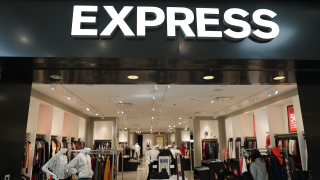Given the immediate positive impact that affirmative action had, it was perfectly reasonable for liberals to want to believe that it could be, at long last, an answer to economic discrimination and structural inequality. But it wasn’t. Not remotely. For starters, the quotas and mandates put in place were almost comically easy to evade. The skilled labor unions required to admit Blacks engaged in practices known as checkerboarding (putting all the Black hires on government-contracted job sites while ignoring the quotas everywhere else) and motorcycling (shuffling Black hires from job site to job site depending on where federal inspectors were slated to show up). Quotas may have seemed like a positive development, and they did produce some jobs, but they also turned Black employment into a numbers game—and gave employers a way to game the numbers.
Affirmative action in state, local, and federal government offered decent jobs with decent wages, but the side effect of all this government hiring was to relieve the white collar private sector from having to truly confront the issue in its own staffing. For the minimal hiring it did do, corporate America made sure to meet its new quotas in the least disruptive way possible, hiring Blacks for back-office roles in the accounting department, for example, or creating make-work departments that had no power and did nothing, like the community outreach or “social responsibility” department. Again, these were decent jobs with decent wages, but they diverted Blacks from the business units where real decisions were made. Affirmative action offered the illusion of reparative justice wrapped up in the rhetoric of empowerment, but its net result was to absorb and neutralize Black demands for equality, not fulfill them.
Another effect of affirmative action was that it created a short-term labor shortage in the Black middle class, because that’s who affirmative action was designed to help. In Nixon’s taxonomy of race, there was a clear division between “the good Blacks” and the rest of urban America. “There are 35 percent of Blacks we can do good with,” he told his staff. And it was squarely at this group that he aimed his policies. If you look at the areas where affirmative action was implemented—college admissions, corporate hiring, minority business loans, skilled labor unions, government office jobs—you’ll notice that most of them aren’t really things that will help you if you’ve never graduated from high school. The urban poor were hopeless, just “little Black bastards on the welfare rolls at $2,400 a family,” Nixon said, and for this group his policy aims were clear.
For the unemployed Black male teenager, Nixon had a very different social program to offer. During his 1968 campaign, against the backdrop of violent riots in America’s inner cities, the candidate made repeated and thinly veiled calls for “law and order,” criminalizing the urban poor in the nation’s mind and promising his silent majority that lawbreakers would be dealt with harshly under his administration. Once in office, Nixon launched his now infamous “War on Drugs,” planting the seeds that have grown, decades later, into a system of mass incarceration—something all-too-familiar to the unemployed Black male teenager of today. As the 1970s progressed, the Black underclass was increasingly left behind while the Black middle class was movin’ on up—not to the East Side, typically, but to majority Black suburbs where they continued to be isolated from the schools and social networks that offered access to greater economic opportunity.
Did millions of people do well under affirmative action? Yes. A bribe only works if you actually give somebody something. But the benefits that accrued to Black America under affirmative action could almost be considered a byproduct of the program’s actual endgame: to give Black people just enough to stop rioting and leave the White establishment to go about its business. While some Black people used quotas and set-asides as a foothold to climb into genuine positions of power, the effect of affirmative action overall was to funnel upwardly mobile Blacks into a separate employment pipeline where their aspirations were held in check, where they exercised very little authority, and where their progress depended on government intervention. Thanks to affirmative action, the Black middle class was now vested in the very system the civil rights revolution had sought to overthrow.













